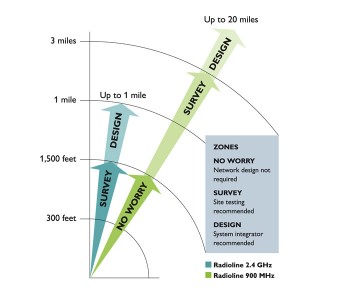
Setting Up Reliable Monitoring for a Water and Wastewater System Using Phoenix Contact Radioline
Blog Post by Patti Engineering Senior Engineer Nick Hitchcock, P.E
Recently, we worked on a project to monitor and control equipment over distances. In our case, we were controlling and monitoring water wells spread throughout a city. Originally, the wells were all hardwired back to the water plant. This became a problem when buried wires became damaged by digging or by other utility workers unknowingly disconnecting lines. Also, the telephone lines were leased in places, causing a monthly expense.
We turned to 900MHz radios. We installed radio based I/O modules at each well head and the water plant using Phoenix Contact Radioline.
There are 3 modes of operation for Phoenix Contact Radioline:
- Wire-In –Wire-Out: maps I/O from one location to another via wireless without the need for an additional controller or software
- Wireless I/O to Modbus: collects I/O directly at the Radioline wireless module using extension modules. This I/O is addressed via Modbus without the need for additional hardware
- Wireless Serial: provides RS-232 and RS-485 networking, connecting serial end devices, PLCs and RTUs reliably
We used the Modbus mode and read the I/O into our PLC. Using the Modbus mode basically turned them into a remote I/O rack sitting on a Modbus network.
Things to keep in mind with radios

- Perform surveys to verify that the radios will work in your situation. You’ll need to make sure that the required distances have been met. We did two types of surveys.
- Virtual surveys using software – Phoenix has software that can help with this. We also used publicly available land surveys.
- Physical survey – Buildings, trees, and other obstructions aren’t always modeled into the software. We took the equipment into the field to verify our virtual findings.
- 900MHz is suitable for non-line-of-sight applications, but that does reduce distances.
By switching to this system, the municipality now has a much more reliable monitoring system for their water and wastewater.
Related categories: Blog Control Systems Integration


